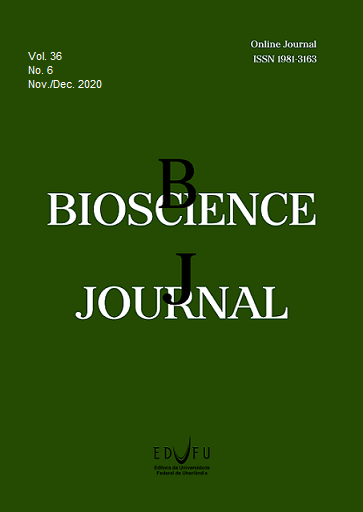Use and response to phosphorus by potato clones in two cropping systems
DOI:
https://doi.org/10.14393/BJ-v36n6a2020-48194Keywords:
In vitro culture., Off-soil cultivation., Mineral nutrition., Selection of clones., Solanum tuberosum L.Abstract
The selection of potato plants (Solanum tuberosum L.) that are efficient in the use of phosphorus (P) plays an important role in increasing crop productivity, reducing the cost of production due to the high price of phosphate fertilizers, as well as reducing the pollution of the environment due to the better use of the applied fertilizers. The objective of this work was to compare the method of selection of potato clones for the efficiency of use and response to P between in vitro and off - soil systems with the use of sand as substrate. To that end, potato clones SMIC 148-A, Dakota Rose, SMINIA 793101-3, SMIB 106-7, SMIF 212-3, SMIJ 319-1 and P 150 were cultivated at low and high levels of P in the culture systems in vitro (1,935 and 19,346 mg P L-1) and off-soil (2.32 and 23.2 mg P L-1). The selection of potato clones using only as a criterion the accumulation of P under low nutrient level is not adequate, both in off-soil and in vitro cultivation. Clones selected as being more efficient in the use of P in in vitro cultivation do not prove to be necessarily more efficient in off-soil cultivation. No clone remains in the same classification group regarding the efficiency of use and response to P, based on the production of dry mass, in the two cropping systems.
Downloads
Published
Issue
Section
License
Copyright (c) 2020 Darlene Sausen, Ivan Ricardo Carvalho, Júlia Gomes Farias, Athos Odin Severo Dorneles, Aline Soares Pereira, Ritieli Baptista Mambrin, Francine Lautenchleger; Fernando Teixeira Nicoloso

This work is licensed under a Creative Commons Attribution 4.0 International License.





